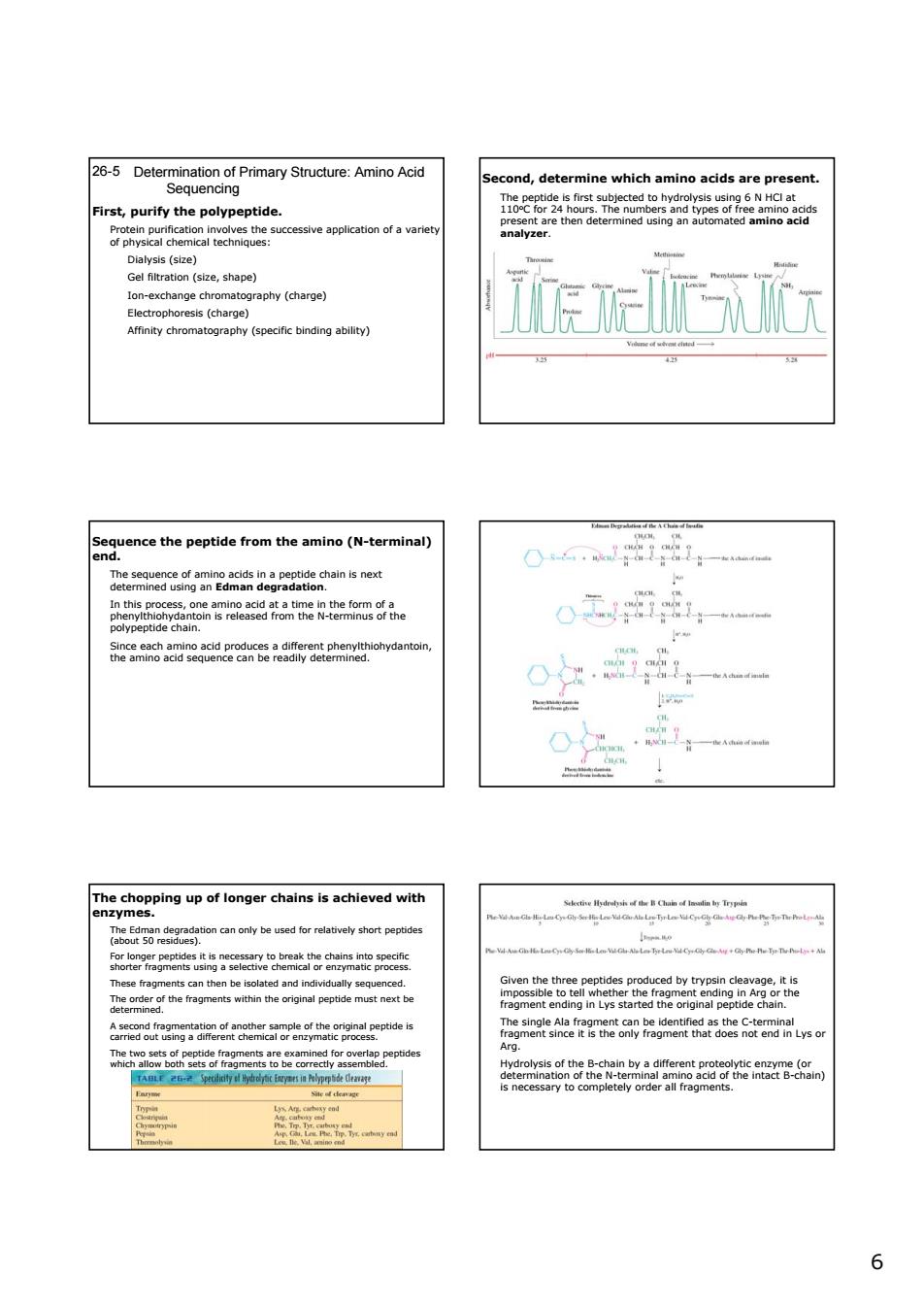正在加载图片...

Second,determine which amino acids are present. First,purify the polypeptide chemica ssive application of a variet Gelnitra(size,shape) aphy (charge) 旋所流 ence the peptide from the amino(N-terminal) h8e3oseeaanmeteomcn The chopping up of longer chains is achieved with ca8e2gnenacacicee inconme品o5 o。 66 Determination of Primary Structure: Amino Acid Sequencing 26-5 First, purify the polypeptide. Protein purification involves the successive application of a variety of physical chemical techniques: Dialysis (size) Gel filtration (size, shape) Ion-exchange chromatography (charge) Electrophoresis (charge) Affinity chromatography (specific binding ability) Second, determine which amino acids are present. The peptide is first subjected to hydrolysis using 6 N HCl at 110oC for 24 hours. The numbers and types of free amino acids present are then determined using an automated amino acid analyzer. Sequence the peptide from the amino (N-terminal) end. The sequence of amino acids in a peptide chain is next determined using an Edman degradation. In this process, one amino acid at a time in the form of a phenylthiohydantoin is released from the N-terminus of the polypeptide chain. Since each amino acid produces a different phenylthiohydantoin, the amino acid sequence can be readily determined. The chopping up of longer chains is achieved with enzymes. The Edman degradation can only be used for relatively short peptides (about 50 residues). For longer peptides it is necessary to break the chains into specific shorter fragments using a selective chemical or enzymatic process. These fragments can then be isolated and individually sequenced. The order of the fragments within the original peptide must next be determined. A second fragmentation of another sample of the original peptide is carried out using a different chemical or enzymatic process. The two sets of peptide fragments are examined for overlap peptides which allow both sets of fragments to be correctly assembled. Given the three peptides produced by trypsin cleavage, it is impossible to tell whether the fragment ending in Arg or the fragment ending in Lys started the original peptide chain. The single Ala fragment can be identified as the C-terminal fragment since it is the only fragment that does not end in Lys or Arg. Hydrolysis of the B-chain by a different proteolytic enzyme (or determination of the N-terminal amino acid of the intact B-chain) is necessary to completely order all fragments